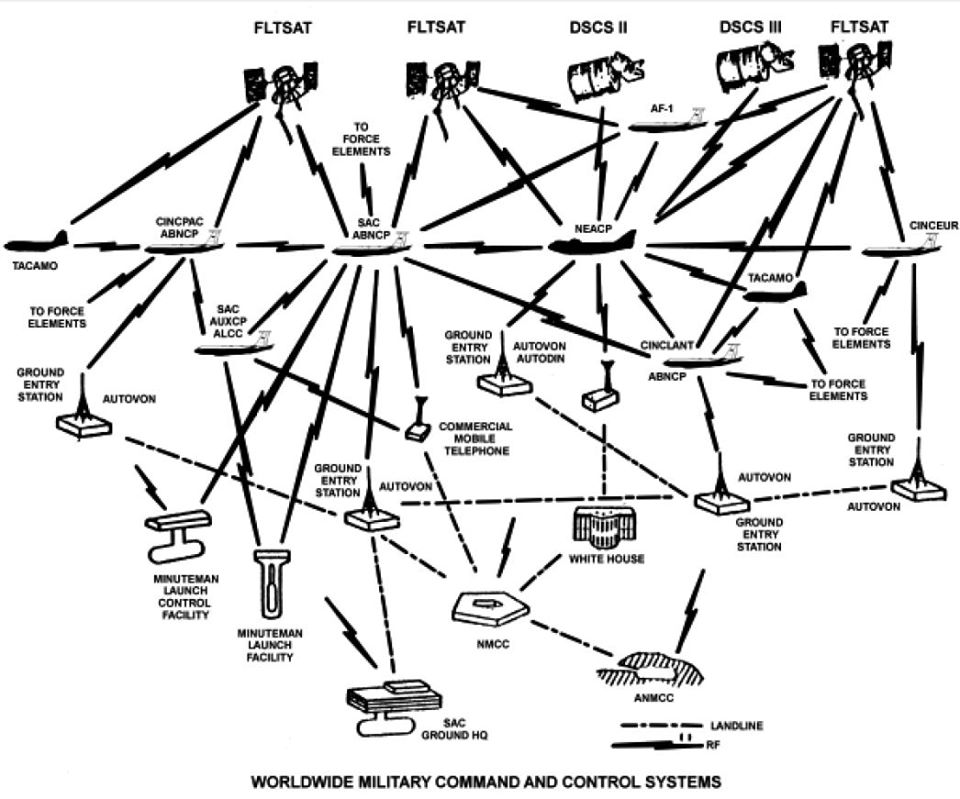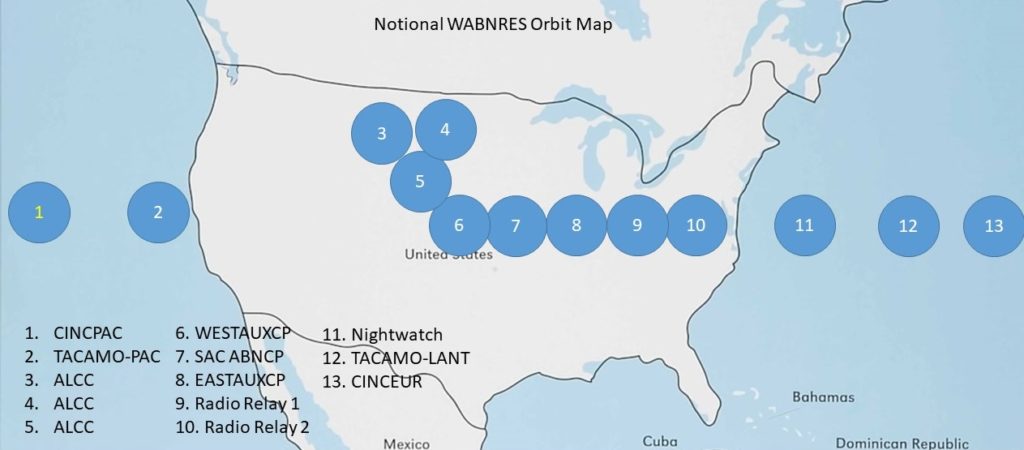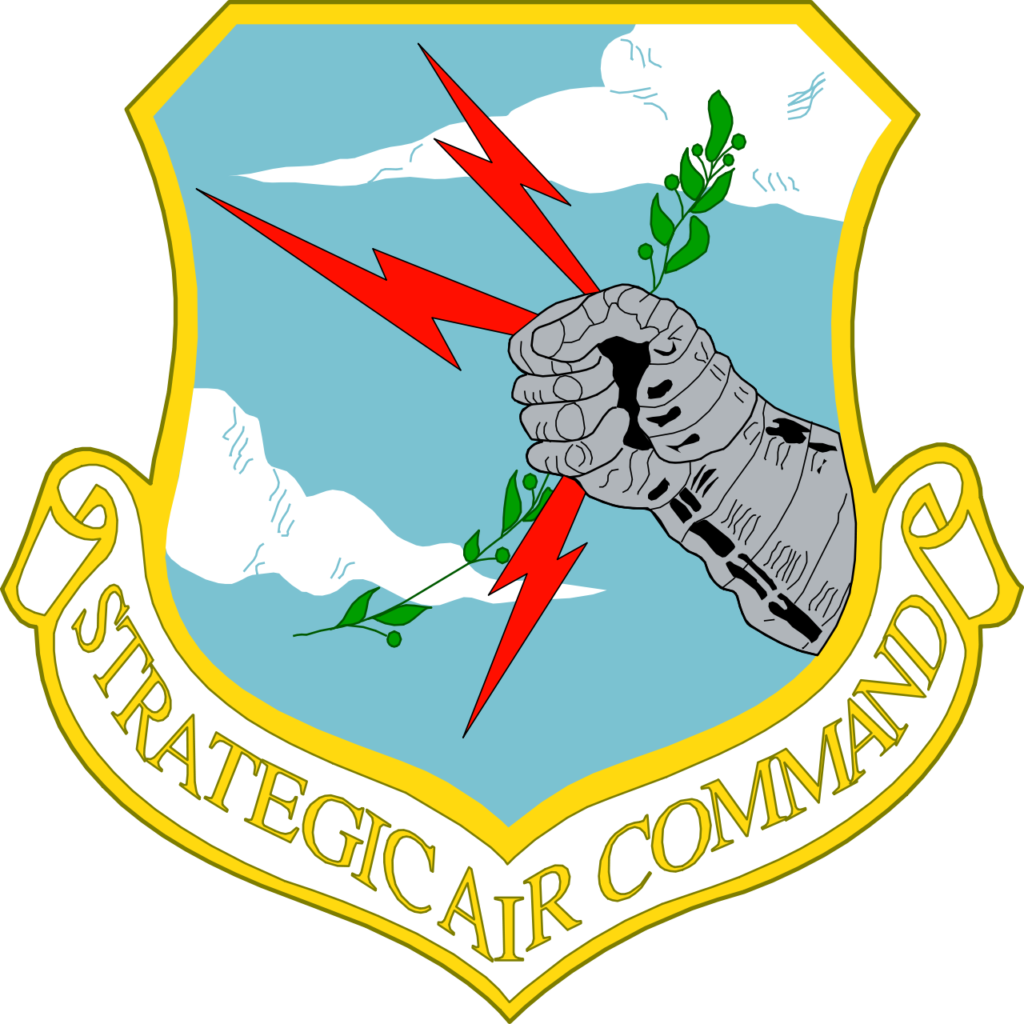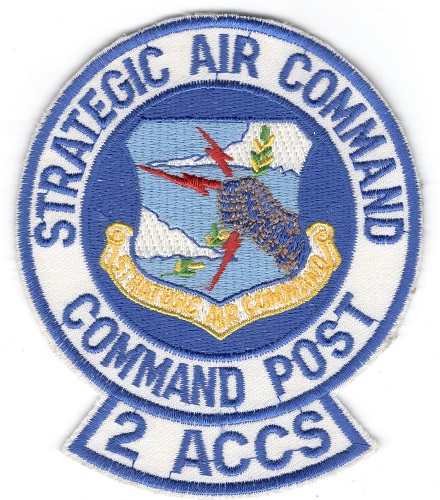What were the PACCS?
The Post Attack Command & Control System or PACCS was a network of airborne and ground communication sites for use before, during, and after a nuclear attack against the United States. I will be focusing on the Strategic Air Command airborne portion of the PACCS before they were deactivated.
When all of the aircraft were generated and airborne they had CONUS Command and Control connectivity to all SAC assets and each other without the use of ground stations. Any of the PACCS aircraft could talk to another via this airborne link, i.e. SAC ABNCP to ALCC-2. (See maps below for notional orbits)
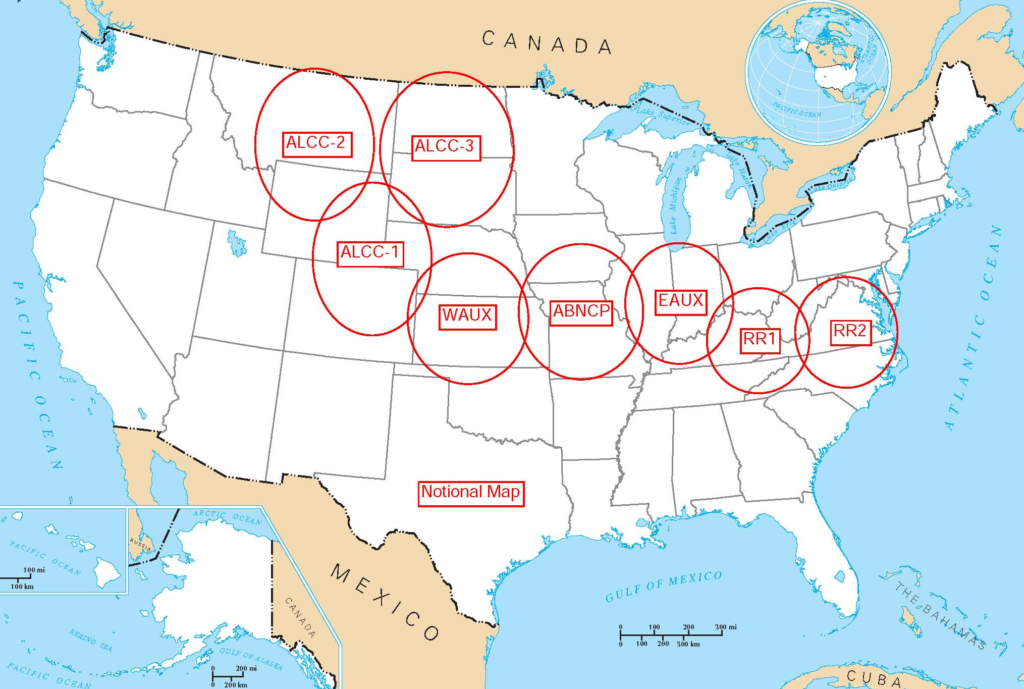
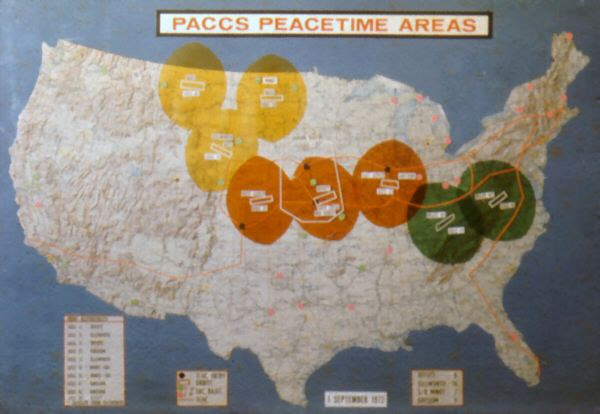
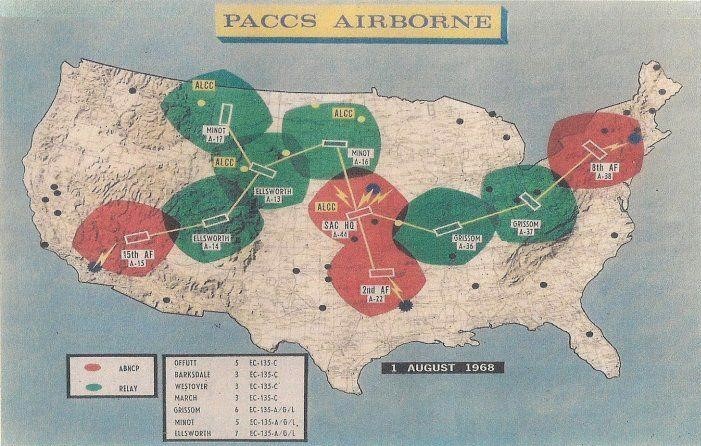
The following is a list of each aircraft and a brief description of their mission.
SAC ABNCP or Looking Glass was on continuous airborne alert and would transmit CINCSAC directions to SAC forces, manage the PACCS, and track all SAC forces, nuclear weapons, and delivery systems. The ABNCP also provided Airborne Launch Control System (ALCS) coverage for the Minuteman Wing located at Whiteman AFB, MO. Not only did Whiteman have Minuteman II ICBMs, but also had the Emergency Rocket Communication System (ERCS) configured missiles on alert.
Auxiliary Aircraft
EASTAUXCP (East Auxiliary Command Post) had to be generated and would manage and track all SAC forces east of the Mississippi and reported to Looking Glass.
WESTAUXCP (West Auxiliary Command Post) was on a 15 minute alert and would manage and track all SAC forces west of the Mississippi and reported to Looking Glass.
Airborne Launch Control Center
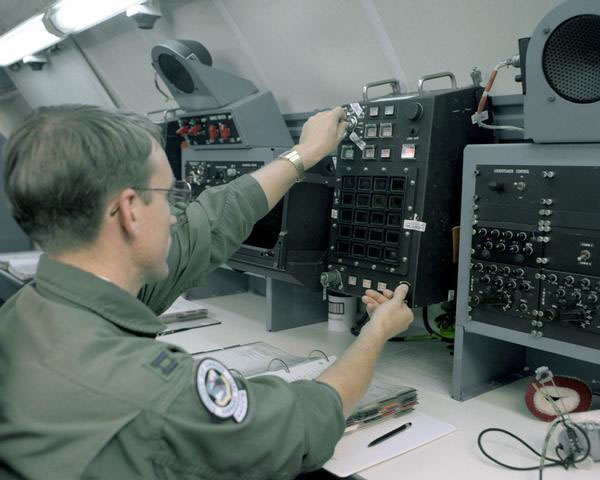
ALCC-1 (Airborne Launch Control Center) was on ground alert at Ellsworth AFB, SD. and was responsible for assistance with launching Ellsworth AFB, SD. And F.E. Warren AFB, WY. ICBMs.
ALCC-2 (Airborne Launch Control Center) was on forward ground alert at Minot AFB, ND. and was responsible for assistance with launching Malmstrom AFB, MT. ICBMs.
ALCC-3 (Airborne Launch Control Center) was on forward ground alert at Minot AFB, ND. and was responsible for assistance with launching Minot AFB, ND and Grand Forks AFB, ND. ICBMs.
If ALCC-2 had a failure with their Airborne Launch Control System (ALCS), any of the EC-135Cs with ALCS could send the launch signal through this network of aircraft.
Radio Relay Aircraft
RR1/RR2 (Radio Relay) was responsible for relaying CINCSAC force direction to all SAC forces in the eastern United States and to establish a link with the National Command Authorities (NCA), National Emergency Airborne Command Post (NEACP), and Air Force 1.
WWMCCS (Worldwide Military Command & Control System)
The WWMCCS provides the leadership to direct and control the operations of U.S. military forces in crises and during conventional or prolonged nuclear war. The most survivable element of the WWMCCS is a series of worldwide airborne command posts and communications relay aircraft referred to as the WABNRES would provide, in the event ground systems are damaged or destroyed, communications to strategic nuclear forces.
WABNRES (Worldwide Airborne Resources)
The WABNRES was a series of worldwide airborne command posts and communication relay aircraft. In the event ground systems were damaged or destroyed, the WABNRES provided communications to direct strategic nuclear forces. Members of the WABNRES network included:
“Looking Glass” for Commander in Chief, Strategic Air Command
East Auxiliary Command Post – SAC
West Auxiliary Command Post – SAC
Radio Relay 1 – SAC
Radio Relay 2 – SAC
“Silk Purse” for Commander in Chief, U.S. European Command
“Scope Light” for Commander in Chief, U.S. Atlantic Command
TACAMOLANT – LANT
“Blue Eagle” for Command in Chief, U.S. Pacific Command
TACAMOPAC – PAC
“Nightwatch” for Presidential Support
WWABNCP (Worldwide Airborne Command Post)
The Looking Glass was the anchor in what was known as the WWABNCP network. With the Looking Glass airborne 24/7 and network of specially equipped EC-135 aircraft that would launch from ground alert status and establish air-to-air wireless network connections in the event of a U.S. national emergency. Members of the WWABNCP network included:
“Looking Glass” for Commander in Chief, Strategic Air Command
East Auxiliary Command Post – SAC
West Auxiliary Command Post – SAC
“Silk Purse” for Commander in Chief, U.S. European Command
“Scope Light” for Commander in Chief, U.S. Atlantic Command
“Blue Eagle” for Command in Chief, U.S. Pacific Command
“Nightwatch” for Presidential Support
